This website uses cookies
This website uses cookies to enable it to function properly and to analyse how the website is used. Please click 'Close' to accept and continue using the website.


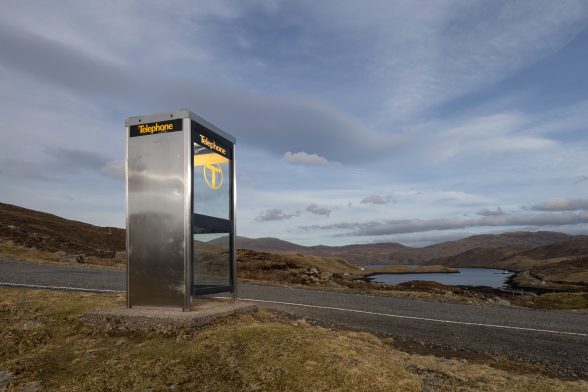
Image credit: John Maher
C20 Society has revived its famous phonebox campaign in an attempt to list three modern KX100 telephone kiosks, as the end of the public payphone nears after more than 140 years of service.
Produced between 1985 and 1996, the KX100 has long divided opinion, yet represents the final flourish of design-led telecommunications infrastructure in the public realm. Underappreciated in comparison to its iconic predecessors, C20 Society is now seeking to proactively preserve the best examples before they disappear completely – including one whose location is a mainstay of pub-quiz trivia, one powered by renewable energy, and one in the most wild and remote corners of the UK, in the Outer Hebrides.

Image credit: James Maloney
Last in the line
The development of the KX100 model was led by David Carter Associates (DCA), industrial designers whose output ranged from the classic Stanley Knife to the Le Shuttle trains for the Channel Tunnel. The brief was to produce a modern, cost-efficient, vandal-proof, rust-proof and well ventilated modular unit.
Unfortunately, the utilitarian appearance and lightweight construction met with opposition from the outset, while the slab-sided glazing have latterly made it an attractive spot for fly-postering and wrap around vinyl advertising. It has been ungenerously described as ‘ugly’ and ‘infrastructure for corporate profit not common good’ [John Jervis, Icon Magazine 2017), inspiring little of the nostalgia that Sir Giles Gilbert Scott’s classic red K2 and K6 models command, with their far more substantial cast iron construction, and neo-Georgian and Art Deco design cues.
Yet this is the ‘silence cabinet’ – as phone boxes were originally known – reduced to perhaps its purest form, bringing modernism to nearly every high street and village green. Its place as the last-in-the-line of a uniquely twentieth century archetype should not go unrecognised.

Image credit: FLPA
Exemplars only
Rather than attempt a mass listing campaign for KX100s – neither a credible or a desirable prospect – the Society has identified three exemplars worthy of preservation; one kiosk in England, Scotland and Wales. Each one has either a unique design that sets it apart from regular production kiosks, or survives in exceptional original condition. We believe these to be the most historically significant examples of the KX100 in the United Kingdom, and listing applications have been submitted in unison to all the relevant national heritage bodies: Historic England, Historic Environment Scotland, and Cadw (in Wales).
Update, September 2024: Historic England and Historic Environment Scotland have responded positively and are assessing the examples in their countries, but sadly the Welsh example at CAT has been removed from its original location, and so we are looking for a suitable alternative Welsh example which we will put forward for listing in due course.
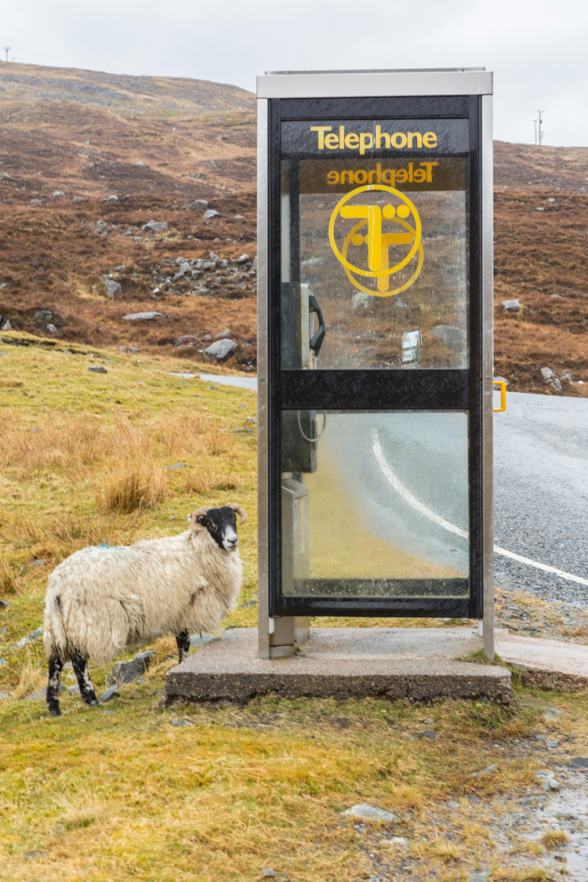
Image credit: Richard Dyson
End of an era beckons
Most households and businesses in the UK are still connected by copper cables, which have provided the backbone of our national telecommunications for more than a century. BT Openreach plan to switch-off this analogue telephone and broadband network from 2025, transitioning to new digital fibre FTTP networks. From a peak of just over 100,000 public payphones in the mid 1990s, there are now less than 20,000 remaining across the country. Though Ofcom recently increased safeguards against the removal of kiosks, where it can be demonstrated they are still an essential community lifeline, hundreds continue to be removed every year and a ‘mass extinction’ for remaining kiosks is thought to be highly likely.
Meanwhile, BT’s ‘Adopt a Kiosk’ scheme has demonstrated the possibility presented by obsolete phone boxes. For just £1, more than 5,000 communities have transformed their kiosks into something bringing value and enjoyment for local people; from lending libraries to mini-galleries, foodbanks to micro-pubs.
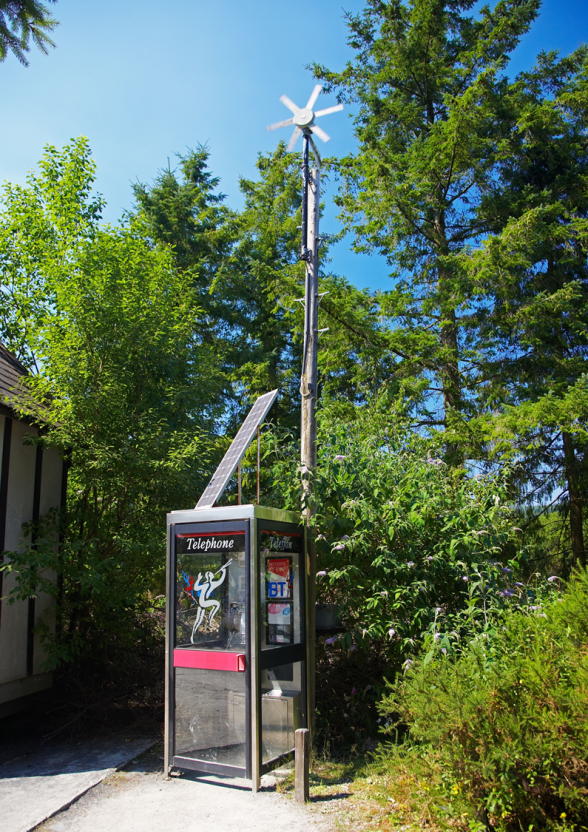
Image credit: Liquid Light
Guardians of the Phonebox
In 1985, the Thirties Society (forerunner to C20 Society) launched the ‘Take is as Red’ campaign, after the privatisation of British Telecom threatened Sir Giles Gilbert Scott’s classic models. In numerical terms, it remains arguably the Society’s most successful initiative, resulting in more than 3,000 (and counting) K1, K2, K4 and K6 kiosks being nationally listed, with countless more adopted by their local communities.
Some years later, in 2009, the campaign was revived to save an even rarer kiosk of different era. The K8, designed in 1965-66 by Bruce Martin, reconnected with the lineage of the classic Gilbert Scott models. There are thought to be less than 50 that survive in situ, of which 31 are now listed in England, Scotland, Wales and on the Isle of Man, thanks to our efforts.
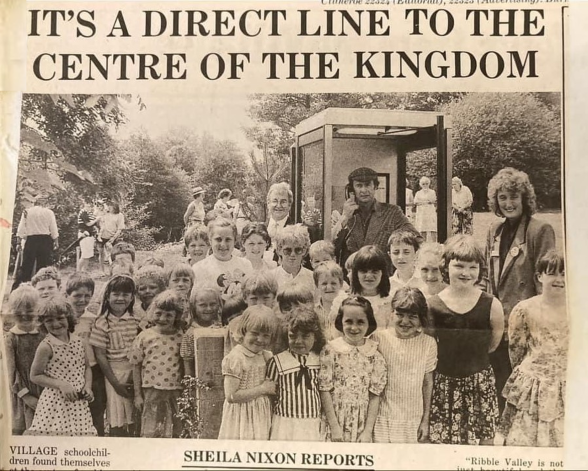
Limited Edition Print
To celebrate and support C20’s ongoing Phonebox Campaign, we’ve produced a very special limited edition print of the iconic Sir Giles Gilbert Scott K2 phonebox, taken from the cover of the Thirties Society landmark 1985 ‘Take it as Red’ campaign report, signed and numbered by original artist Robin Ollington (b.1929).
A strictly limited editions of 40 prints, silkscreen printed on A4 200gsm heavyweight heritage white paper. Add them to your collection while stocks last! Click to buy from the C20 Shop
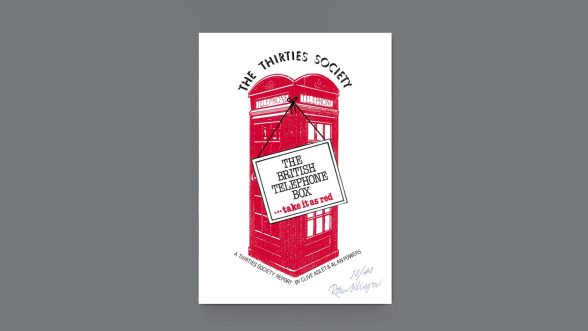

Become a C20 member today and help save our modern design heritage.